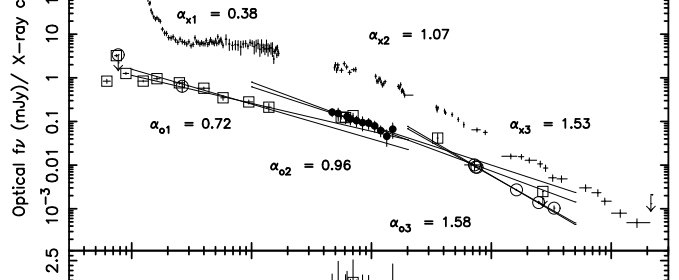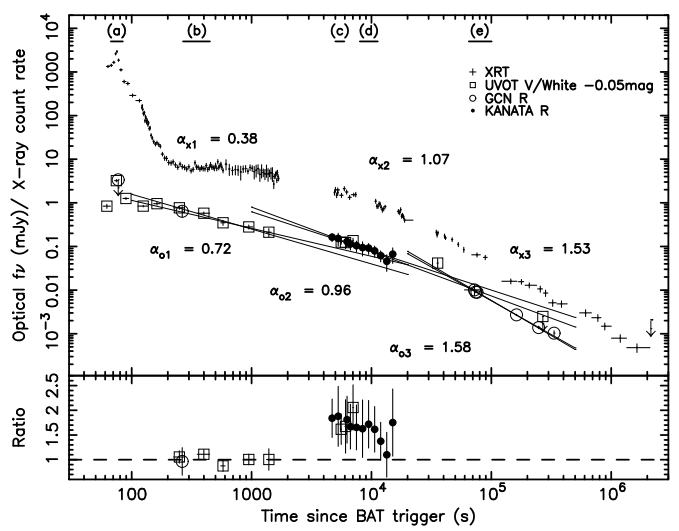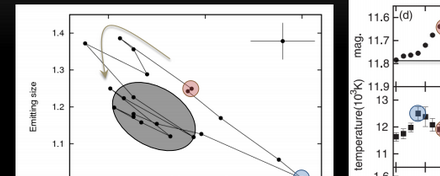Optical behavior of GRB 061121 around its X-Ray shallow decay phase

T. Uehara, M. Uemura, A. Arai, R. Yamazaki, K. S. Kawabata, et al., “Optical behavior of GRB 061121 around its X-Ray shallow decay phase”, A&A, vol. 526, p. 92, 2011.
We report on a detailed study of the optical afterglow of GRB 061121 with our original time-series photometric data. Along with our optical observations and public X-ray data, we discuss the origin of its optical and X-ray afterglows. We observed the optical afterglow of Swift burst GRB 061121 with the Kanata 1.5-m telescope at Higashi-Hiroshima Observatory. Our observation covers a period just after an X-ray plateau phase. We also performed deep imaging with the Subaru telescope in 2010 in order to estimate the contamination by the host galaxy. In the light curve, we find that the optical afterglow also exhibited a break as in the X-ray afterglow. However, our observation suggests a possible hump structure or a flattening period before the optical break in the light curve. There is no sign of such a hump in the X-ray light curve. This implies that the optical emitting region was distinct from the X-ray one. The hump in the optical light curve was possibly caused by a passage with the typical frequency of synchrotron emission from another forward shock distinct from the early afterglow. The observed decay and spectral indices are inconsistent with the standard synchrotron-shock model. As a results, the observation requires a change in microphysical parameters in the shock region or prior activity by the central engine. Alternatively, the emission during the shallow decay phase may be a composition of two forward shock emissions, as indicated by the hump structure in the light curve.


